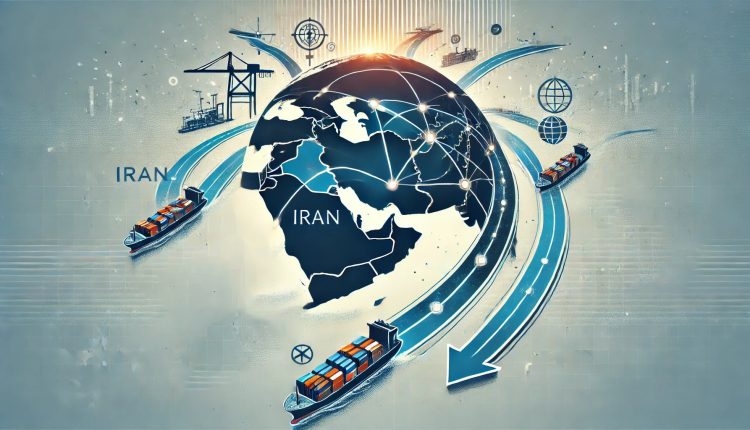Our country, Iran, with its long and rich history, has always been recognized as a bridge between the East and the West, as well as the North and the South. The unique geopolitical and geoeconomic position of the country, both in the past and present, has endowed it with special value. However, in today’s world, the emergence of new trade corridors poses a serious threat to this status. In this report, we will examine the challenges and opportunities these new corridors create for Iran, and the implications of these developments for the country’s future economic and geopolitical landscape.
Belt and Road: A Serious Challenge for Iran
One of the major infrastructure projects is China’s Belt and Road Initiative, which is creating new land and sea routes for global trade. These projects, which historically passed through Iran, are now circumventing our territory. For instance, the Caspian Corridor, the China-Pakistan Economic Corridor (CPEC), and the Middle Corridor are all routes that can threaten Iran’s interests.
Benefits and Threats of New Corridors
Among the six main corridors introduced as part of China’s “New Silk Road,” three bypass Iranian territory, directly negatively impacting Iran’s national security. In this context, we will examine the challenges and threats posed by each of these corridors separately:
1. Caspian Corridor
This corridor leads to the port of Turkmenbashi in Turkmenistan and could marginalize Iran’s northern ports. With increasing Turkish investments in this port, Iran’s position as a trading hub in the region is being challenged.
2. China-Pakistan Economic Corridor (CPEC)
This corridor connects China to the port of Gwadar in Pakistan, potentially diminishing the significance of Iran’s Chabahar port. Concurrently, this shift may increase Saudi Arabia’s regional influence, which could reduce Iran’s power in the Persian Gulf.
3. Middle Corridor
This corridor establishes a direct connection between Kazakhstan and Turkey, potentially enhancing Turkey’s position in the region, which is significant in terms of economic competition for Iran.
These changes in corridors and regional collaborations could lead to a reduction in Iran’s influence in West and Central Asia. In this context, Iraq is also pursuing the “Development Corridor” project, aimed at connecting to Turkey through railways and highways. This project clearly illustrates the neighboring countries’ efforts to reduce their dependency on Iran.
Additionally, the recently approved India-Middle East-Europe corridor is another attempt to bypass Iran and strengthen India’s position against China.
Need for Iran to Change Its Approach
In light of these challenges, Iran must quickly adjust its approach and seek to leverage the remaining opportunities. Given that Iran’s geographical position can serve as a key advantage, efforts should be made to strengthen trade and infrastructure relations with neighboring countries.
This action can not only enhance Iran’s national security but also contribute to the elevation of its geopolitical and geoeconomic standing. For instance, strengthening economic cooperation with CIS countries (Commonwealth of Independent States) and Gulf nations can lead to the creation of new markets for Iran.
The reality is that if Iran fails to respond swiftly to global changes, it may face economic, security, and other consequences. Therefore, vigilance and effective action against ongoing developments are essential. To achieve this goal, national policies need to be reformed and updated to enhance trade and economic infrastructure.

